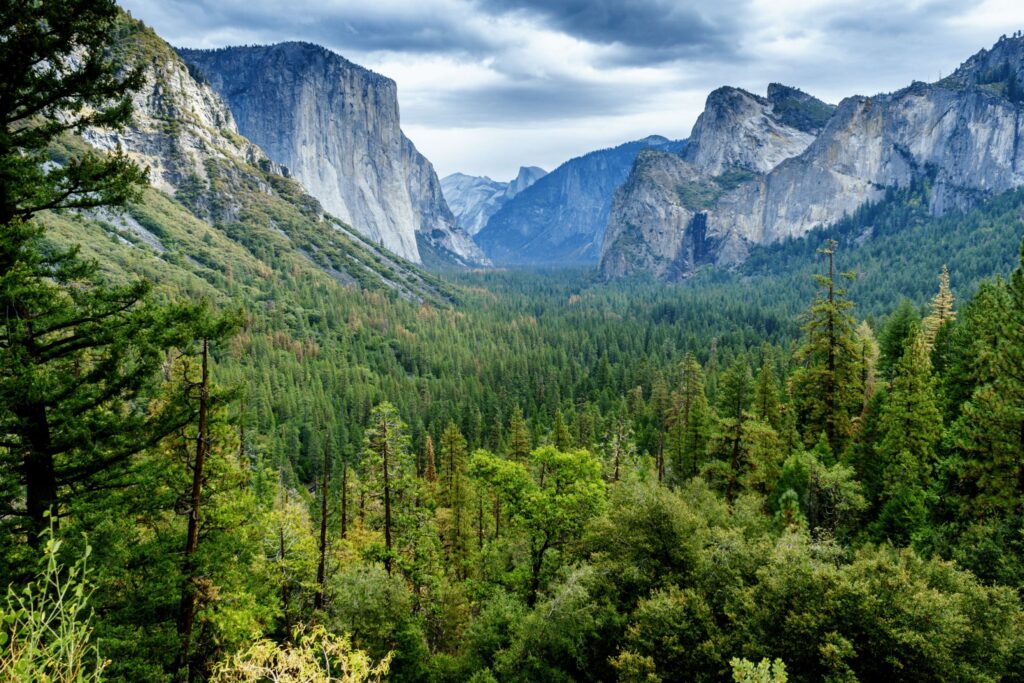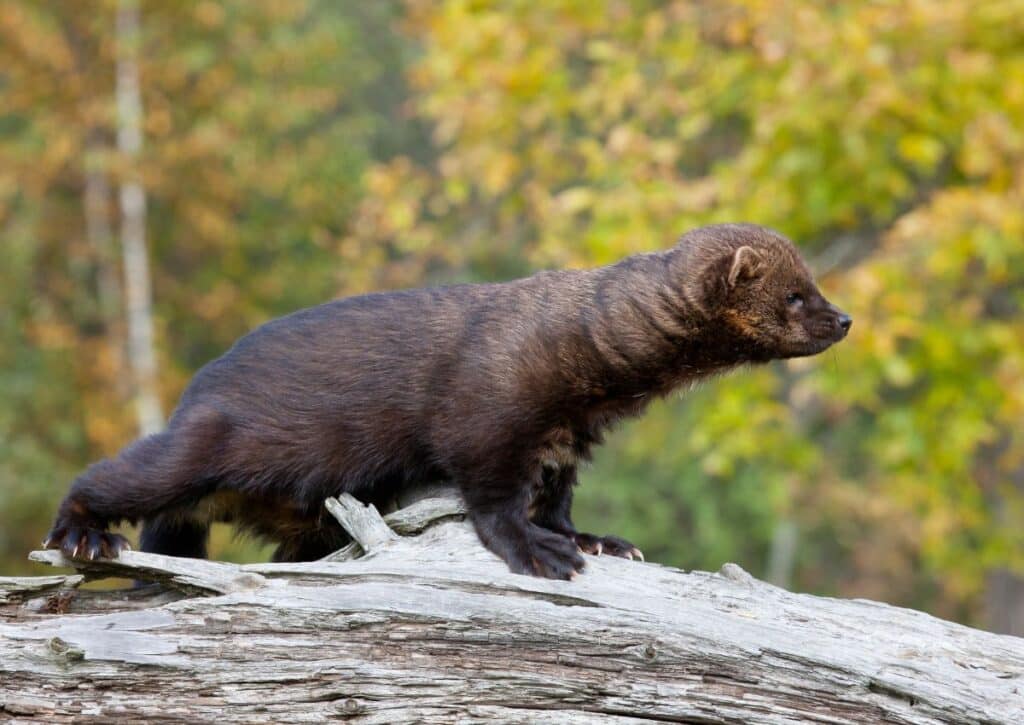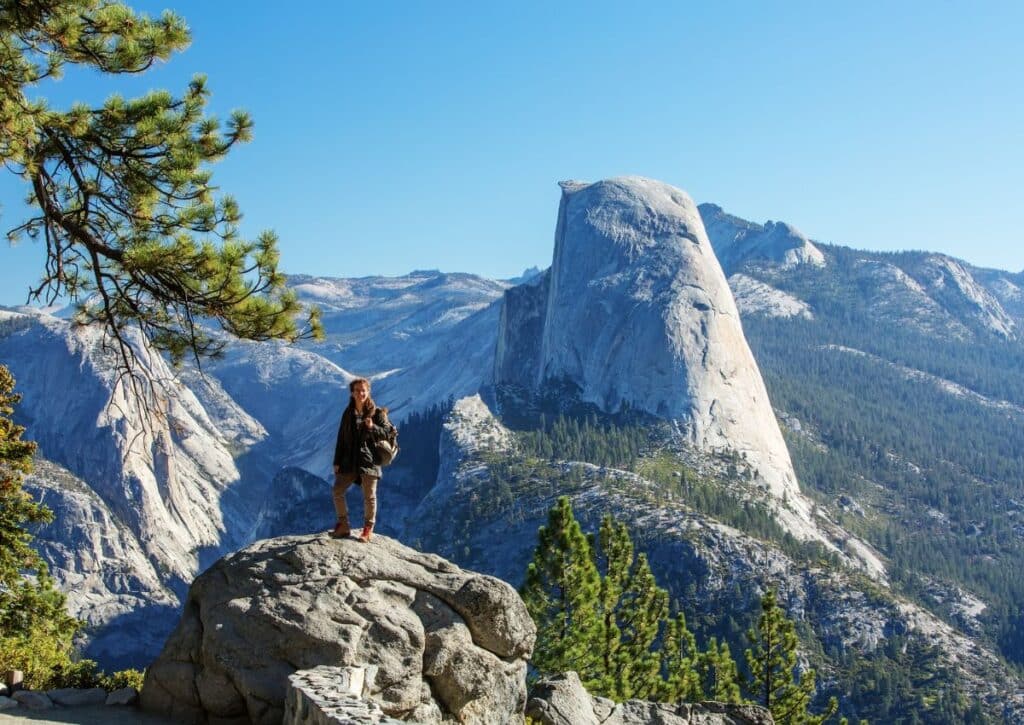Discover 16 amazing animals in Yosemite National Park! Embark on a hiking adventure, encounter diverse wildlife, and explore top trails. Dive in!
Are you ready for a wild adventure? Dive deep into the heart of Yosemite National Park, a hiker’s paradise filled not just with stunning landscapes, but also a diverse cast of furry, feathery, and scaly residents!
From the stealthy mountain lion prowling in the shadows to the playful snowshoe hare hopping around, there’s no telling who you might bump into on your next hike.
In this guide, we’ll introduce you to 16 of the most fascinating animals in Yosemite that are sure to make your journey all the more exhilarating.
So, lace up your hiking boots, charge your camera, and let’s set out on a wildlife-packed expedition you’ll never forget!
The Rare Pacific Fisher
The Pacific fisher is a rare and elusive creature that is seldom seen by visitors to Yosemite National Park. This small mammal is related to the weasel and has dark brown fur with white patches on its belly and legs.
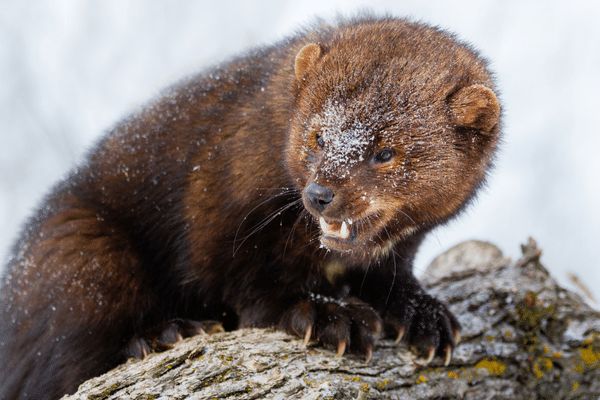
The Pacific fisher is an expert at climbing trees and is often found high up in the branches, where it feeds on small animals such as squirrels and rodents. If you’re lucky enough to spot a Pacific fisher while hiking in Yosemite, be sure to take a photo!
The Pacific fisher is currently listed as a “species of special concern” in California, due to threats from habitat loss and fragmentation. Its populations have declined in recent decades, but conservation efforts have succeeded in stabilizing numbers.
The species is still vulnerable to human disturbance, such as recreational activities, so be sure to be respectful when you encounter a Pacific fisher while exploring Yosemite’s forests and meadows.
Coyotes
Coyotes are a common sight in Yosemite National Park and are part of the park’s ecosystem. The coyote is also known as the “trickster” because of its cunning and resourceful nature, and it is considered one of the most adaptable and intelligent animals in North America.
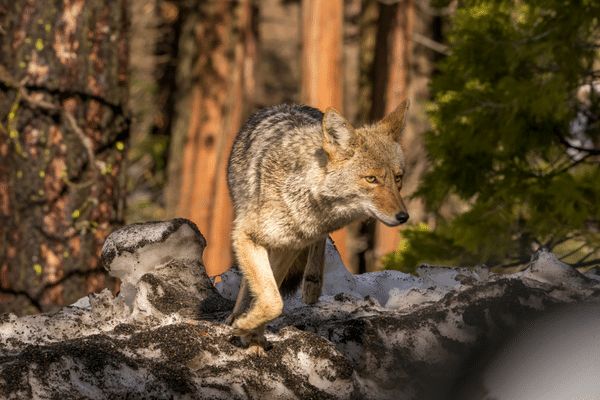
Yosemite’s mountain coyote is a unique subspecies that inhabits the high-elevation areas of the park. They are smaller than their desert and plains counterparts, with a thick, bushy tail and a grayish-brown coat. In fact, some people consider the mountain coyote to be the most beautiful of all coyote subspecies.
Coyotes in Yosemite are primarily scavengers, feeding on small mammals, birds, insects, and fruits. They are also known to hunt rabbits, rodents, and even larger prey such as deer. However, they are not a threat to humans, and attacks on people are sporadic.
One of the reasons why coyotes thrive in Yosemite is because they have learned to adapt to the changing landscape. As the park has become more developed, the coyotes have learned to scavenge for food in campgrounds and picnic areas.
Unfortunately, this has led to some negative encounters between humans and coyotes, with some coyotes becoming too habituated to human food and losing their fear of people.
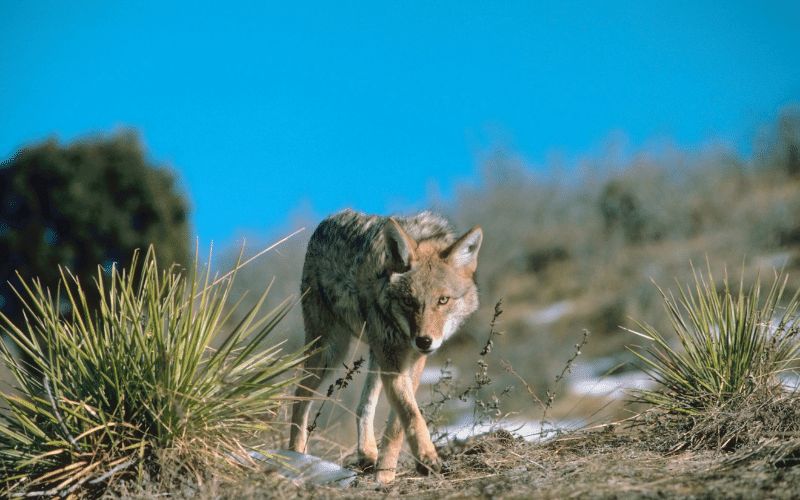
To prevent such negative interactions, park officials advise visitors to keep their food and trash secured in bear-resistant containers, and to not feed or approach coyotes or any other wildlife. If you do encounter a coyote, it’s important to keep your distance and give the animal plenty of space.
The mountain coyote is a fascinating and important part of the Yosemite ecosystem. While it’s important to respect these animals and keep a safe distance, observing them in the wild can be a memorable and rewarding experience for visitors to the park.
Much loved Black Bears
Yosemite National Park is home to one of the most fascinating creatures of the wild – the American black bear. With their unique biology and behaviors, these bears have captivated the attention of wildlife enthusiasts for years.
While most people imagine black bears as being completely black, in reality, most of Yosemite’s black bears are brown or even blond or reddish-brown in color. Truly black-colored black bears are rare in the west, making them even more intriguing.
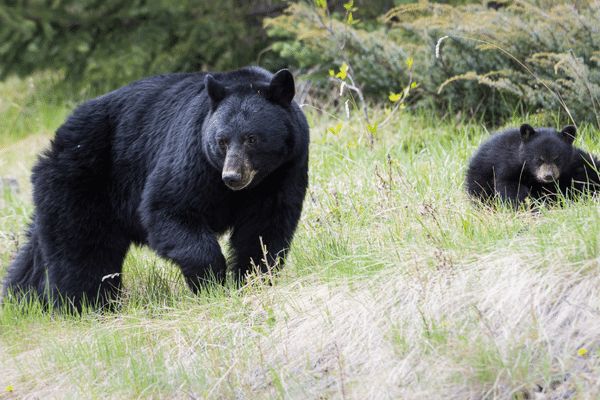
These massive creatures can weigh up to 690 pounds, with the average adult male weighing around 250 pounds and adult female weighing around 150 pounds. In the fall, they gorge on acorns and other seasonal foods, consuming up to 20,000 calories a day, which is equivalent to a human eating 40 Big Mac sandwiches in a day!
Their hibernation process is truly remarkable, as they enter a state of reduced body temperature, pulse rate, and respiration that conserves energy. They do not defecate or urinate during this time, but can metabolically extract energy from body wastes.
Black bears in Yosemite have a varied diet, mostly consisting of grasses and berries, with acorns being their favorite food in the fall. They also eat ants, termites, and insect larvae ripped out of logs or dug from the ground.
During the winter, they hibernate in hollow trees or logs, under the root mass of a tree, or in caves formed by a jumble of large rocks. Their “sleep” is not a deep one, as they often leave the den periodically.
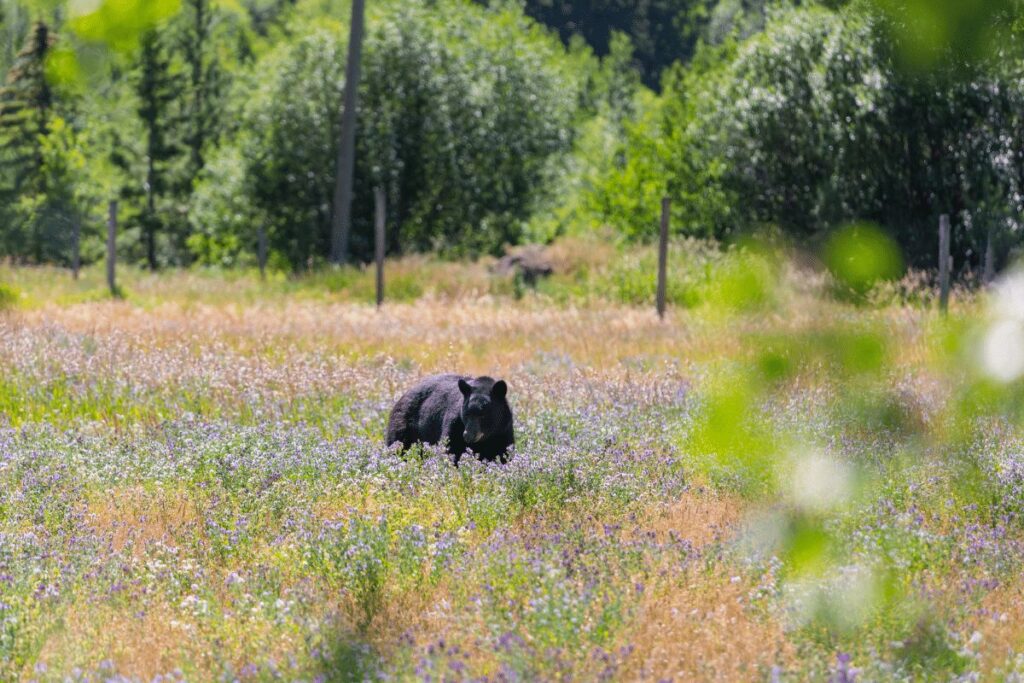
Females give birth to one to three cubs while in hibernation, and these cubs remain with their mother until about 16 to 17 months of age. The oldest bear known in Yosemite was a 32-year-old female first captured in the Tuolumne Meadows area in the 1980s.
Encountering a black bear in Yosemite can be a thrilling experience, evoking excitement, awe, and even fear. Visitors are advised to keep their distance for safety and respect for themselves and the animal.
If they see a black bear in undeveloped areas, they should remain at least 50 yards from it. If they encounter a bear in developed areas, they should stand their ground and scare the bear away by raising their arms and making very loud noises.
Black bears may show dominance by bluff charging, especially when guarding food or cubs. Attacks are rare, and no one has been killed or seriously injured by a black bear in Yosemite.
Bobcat
One of the animals you might see while hiking in Yosemite National Park is the Bobcat. The Bobcat is a North American wildcat that ranges from southern Canada to northern Mexico. Adult Bobcats weigh 8-15 pounds and have a body length of 20-30 inches (including their tail).
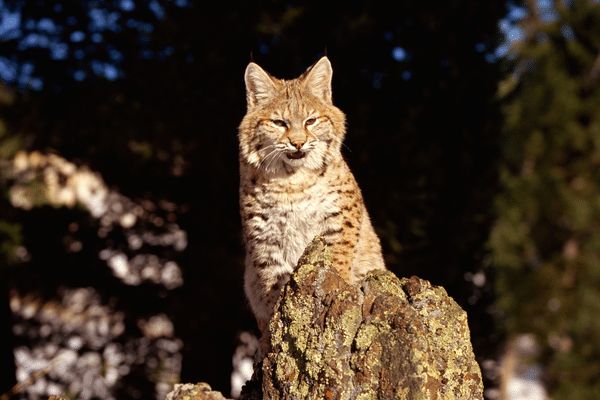
They are brown or tan with black spots and streaks on their fur. Their ears are black with white tips, and they have a black tuft of hair on their forehead.
Bobcats are carnivores and eat a variety of small animals including mice, voles, rabbits, birds, insects and reptiles. They are also opportunistic feeders and may also hunt for larger prey such as deer or even domestic pets if the opportunity arises. They have been known to stalk their prey patiently for hours at a time waiting for the perfect moment to strike!
While Bobcats will typically try to avoid people, it’s possible that you may see one while hiking in Yosemite National Park. If you do, the best thing to do is keep your distance and watch from afar. Though they generally don’t attack humans unless provoked (or protecting its young) it’s still best to maintain a safe distance while observing this majestic wildcat.
The Legendary Mountain Lion
Mountain lions, also known as cougars or pumas, are majestic and elusive creatures that inhabit Yosemite National Park. They are one of the largest carnivores in the park, and are an important part of the ecosystem.
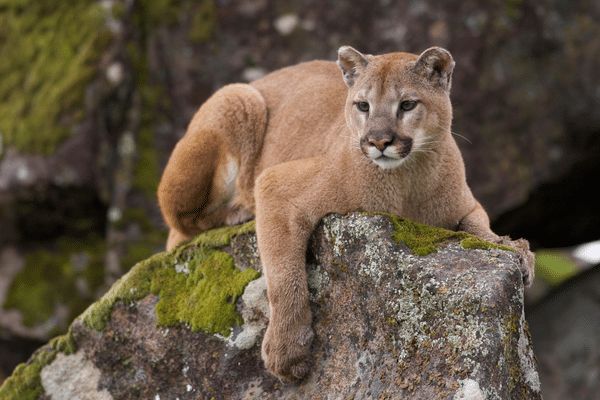
Mountain lions are solitary animals and are rarely seen by humans, but their presence is felt throughout the park. They are known to prey on a variety of animals, including deer, coyotes, and small mammals like rabbits and squirrels. They are also known to occasionally prey on livestock, which can bring them into conflict with humans.
Despite their reputation as predators, mountain lions play an important role in maintaining a healthy ecosystem. They help to control the population of prey species, and their presence can have a positive impact on the overall health of the ecosystem.
However, interactions between humans and mountain lions can be dangerous. In Yosemite, there have been a few incidents of mountain lion attacks on humans. Visitors to the park are advised to be cautious and to take precautions to reduce the risk of encounters with these animals.
If you encounter a mountain lion, it is important to remain calm and avoid running away. Instead, stand your ground, make yourself appear larger, and make noise to try and scare the animal away. It is also important to never approach a mountain lion or to feed any wildlife in the park, as this can habituate animals to humans and increase the risk of negative interactions.
Mountain lions are a fascinating and important part of the Yosemite landscape, and their presence serves as a reminder of the wild and untamed beauty of the park.
The feared North Pacific Rattlesnake
One of the animals you might see while hiking in Yosemite National Park is the North Pacific rattlesnake. This snake is feared by many because it is venomous. However, if you leave it alone, it will leave you alone.
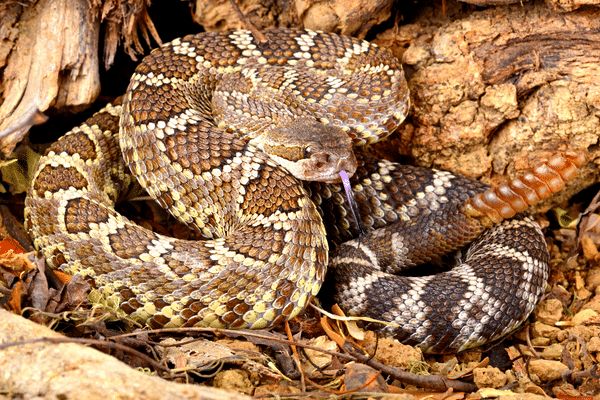
The best thing to do if you see a rattlesnake is to give it a wide berth and move away slowly. If you are bitten by a North Pacific rattlesnake, seek medical attention immediately.
The North Pacific rattlesnake is medium to large in size and usually has a tan, gray or light brown coloration with dark blotches along its back. It also has a rattle at the end of its tail which it uses as a warning when it feels threatened.
The North Pacific rattlesnake is mostly active during the day but can be seen out at night as well.
It is important to remember that not all snakes are venomous. This species of snake rarely bites unless provoked, so if you see one, give it plenty of room and keep your distance.
The endemic Sierra Nevada Red Fox
The Sierra Nevada red fox is an animal you may see while hiking in Yosemite National Park. This small fox is endemic to the Sierra Nevada mountain range in North America and is one of the most rare canids in the world. The best time to see these animals is during the early morning hours or at dusk.
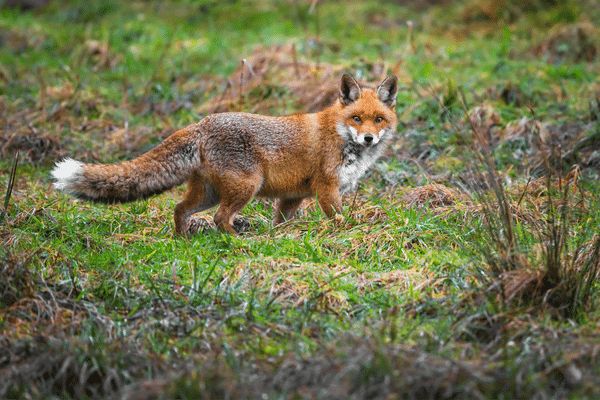
This small fox is generally reddish-brown with a white belly and usually has narrow ears and a black-tipped tail. It tends to feed on voles, ground squirrels, rabbits, birds, insects, fruits, berries, nuts, and seeds.
The primary threats to the Sierra Nevada Red Fox are human activity such as habitat loss due to development, recreation activities like mountain biking and hiking that scare away their prey species, competition with other larger predators such as coyotes or domestic dogs, and disease.
Fortunately, conservation efforts have been taken in recent years to protect these animals by providing more restrictive policies for land use in their range. Additionally captive breeding programs are being developed which will help build greater numbers of this species in the wild.
Majestic Sierra Nevada Bighorn Sheep
Yosemite National Park is home to many different types of animals, including the majestic Sierra Nevada bighorn sheep. These sheep are a sight to behold, and they are often seen while hiking in the park.
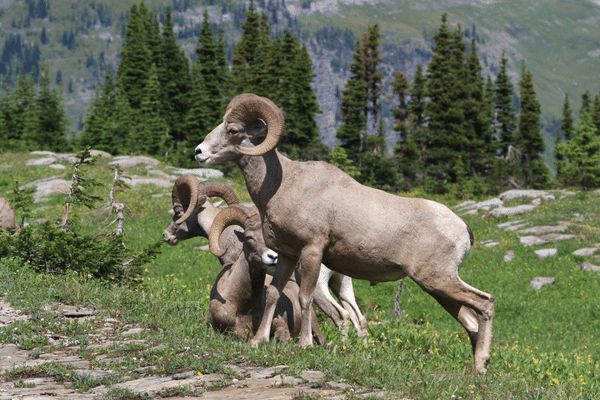
The Sierra Nevada bighorn sheep is a subspecies of the bighorn sheep, and it is native to the Sierra Nevada mountains. These sheep are well-adapted to their environment, and they are known for their sure-footedness on rocky terrain. They are also very agile, which allows them to escape predators.
The Sierra Nevada bighorn sheep is a herbivore, and it feeds on grasses, herbs, and shrubs. These sheep typically live in groups of 10-15 individuals, but they can also be found alone or in pairs. If you’re lucky enough to see one of these beautiful animals while hiking in Yosemite National Park, be sure to enjoy the experience!
Plenty Mule Deer
At Yosemite National Park, you are likely to see plenty of mule deer while hiking. Mule deer are the most common type of deer in the park and can be seen throughout the year. These animals are herbivores and prefer to eat plants and leaves.
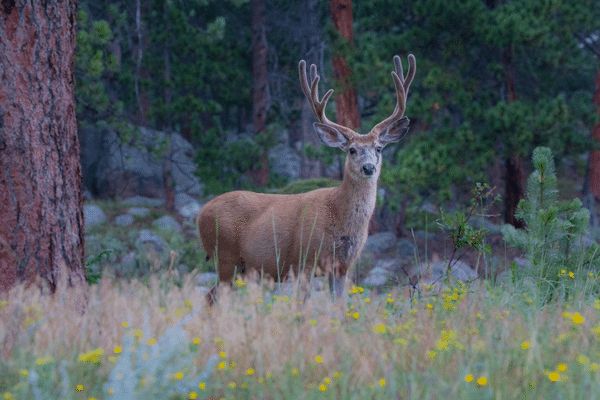
Mule deer are generally shy and cautious around humans, but they will sometimes approach people for food. If you see a mule deer while hiking, be sure to give it plenty of space and do not try to feed it.
If you hike in the early morning or evening, you will have a good chance of seeing mule deer in groups. Pay attention to meadows and forests; these are the areas where mule deer reside. The movement of the deer can also be heard in the morning as they walk and graze through their territory.
California spotted owl
The California spotted owl is one of the most iconic animals in Yosemite National Park. This nocturnal predator is known for its distinctive spotted plumage, which helps it blend in with the dappled sunlight of the forests where it lives.
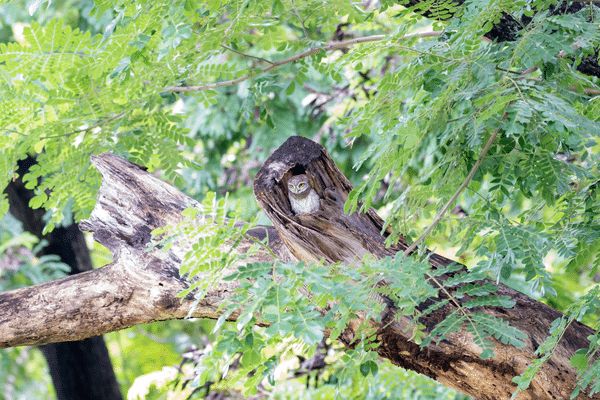
The California spotted owl is an important part of the park’s ecosystem, preying on small mammals and helping to keep the population of rodents in check. While they are not often seen by visitors, their hooting calls can occasionally be heard in the night.
The population of California spotted owls is currently in decline due to habitat loss, as well as predation from invasive species. Conservation efforts are ongoing, including a program started in 2007 that looks to build and maintain owl habitat. The National Park Service also employs the use of soundscapes to attract owls back to Yosemite National Park.
The California spotted owl is an important part of Yosemite National Park and its conservation is essential for the health of its ecosystems. By protecting its habitat, we can ensure that this iconic species continues to thrive in the park for generations to come.
Bats
There are many different types of bats that call Yosemite National Park home. The most common bat in the park is the California Myotis, which can be found roosting in trees and caves. Other bat species include the big brown bat, the little brown myotis, and the Yuma myotis.
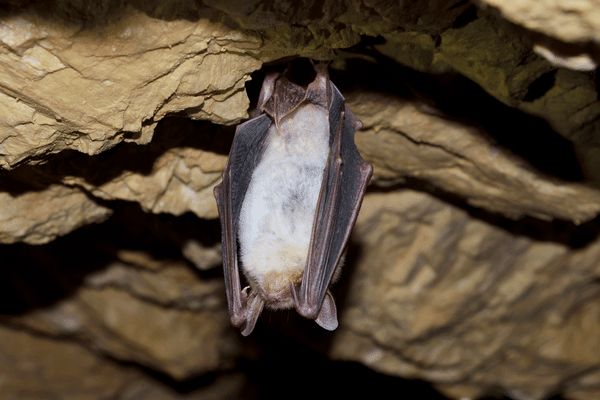
Bats are important to the ecosystem of Yosemite as they help control insect populations. They are also key pollinators, helping to spread pollen from flower to flower.
You may see bats while hiking in Yosemite, especially at dawn or dusk when they are out hunting for insects. If you do see a bat, please do not disturb it as they are protected by law.
The Pacific Mink
The Pacific mink is a rare and elusive creature found in Yosemite National Park. These sleek and agile mammals are expert swimmers and are often spotted darting in and out of the park’s waterways.
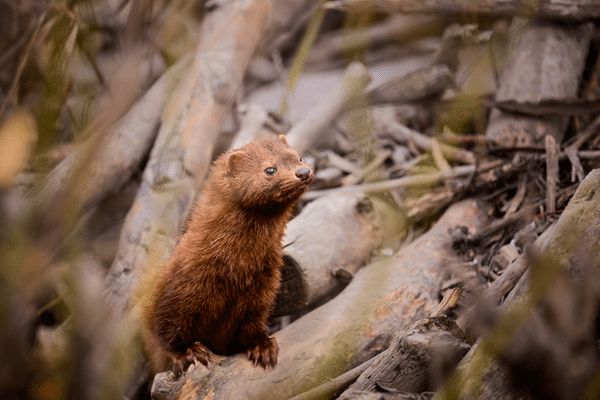
The Pacific mink is a small carnivore, typically measuring around two feet in length from nose to tail. They have a thick and lustrous coat of fur that can range in color from dark brown to almost black. Their sharp claws and powerful jaws make them adept hunters, able to take down prey much larger than themselves.
Despite their impressive hunting abilities, Pacific mink are unfortunately listed as a threatened species due to habitat loss and hunting. This makes spotting one of these rare creatures in the wild all the more thrilling.
If you’re lucky enough to catch a glimpse of a Pacific mink in Yosemite, you’ll likely see it darting along the water’s edge, chasing after fish and other prey. These elusive creatures are also known to make their homes in burrows along the riverbanks, making them even harder to spot.
While Pacific mink are not a common sight in Yosemite, their presence is a testament to the park’s commitment to preserving its diverse ecosystem. By protecting the habitats of rare and endangered species like the Pacific mink, Yosemite ensures that visitors can continue to experience the wonder and excitement of encountering these incredible creatures for generations to come.
Northern Pygmy Owl
The Northern Pygmy Owl is a tiny predator that can be found in Yosemite National Park. Despite its small size, it is a fierce hunter and can take down prey that is almost as big as itself. This species of owl has a distinctive look, with a round head, large yellow eyes, and a small, sharp beak. They are also known for their distinctive call, which sounds like a series of high-pitched whistles.
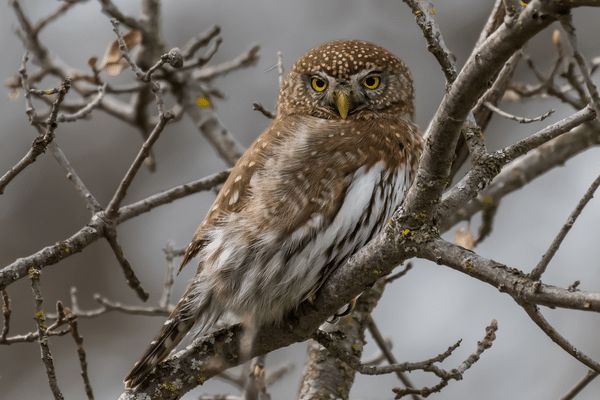
Although they are small, Northern Pygmy Owls are known for their incredible hunting skills. They have been known to prey on small mammals, such as mice and voles, as well as insects and other birds. They are also capable of hunting in the daytime, which is unusual for an owl.
One of the unique features of the Northern Pygmy Owl is its ability to mimic the calls of other birds. This allows them to trick other birds into thinking that they are a harmless species, which makes it easier for them to sneak up and capture their prey.
If you are lucky enough to spot a Northern Pygmy Owl in Yosemite, you will likely be impressed by its agility and quick movements. Despite their small size, these birds are fearless predators, and they have adapted to life in the mountains of Yosemite National Park.
The Handsome Snowshoe Hare
There is no doubt that the Snowshoe Hare is one of the cutest animals you will see while hiking in Yosemite National Park. These little guys are well camouflaged with their white fur and black-tipped ears, making them difficult to spot in the snow. But once you see one, you will be sure to recognize them!
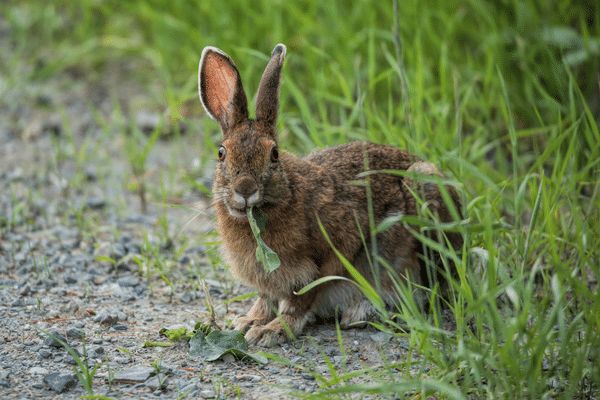
These hares are quite shy but if you’re lucky, you may get to see one up close.
Snowshoe hares have a unique adaptation that helps them survive in the winter months. Their large, wide feet act like snowshoes, helping them to run across the top of the snow instead of sinking down into it. This allows them to outrun their predators .
Snowshoe hares aren’t the fastest animals, but they are sure agile and able to use their slippery toes to make sharp turns and escape predators.
These cuties are also known for their huge appetite – they consume about a third of their body mass each day! Although they primarily eat plants, buds, twigs and bark, they sometimes enjoy munching on insects too!
Finally, Snowshoe Hares don’t hibernate in the winter months, unlike other mammals. Instead they rely on fat stored from summer months and eat whatever they can find while avoiding danger.
All in all, there is no doubt that Snowshoe Hares are some of the cutest animals you will see while visiting Yosemite National Park!
Eastern kingbird
The eastern kingbird is a striking bird with gray upperparts and a white belly. They have a black head with a white throat and bill. The eastern kingbird is the only member of the kingbird family that breeds in the eastern United States.
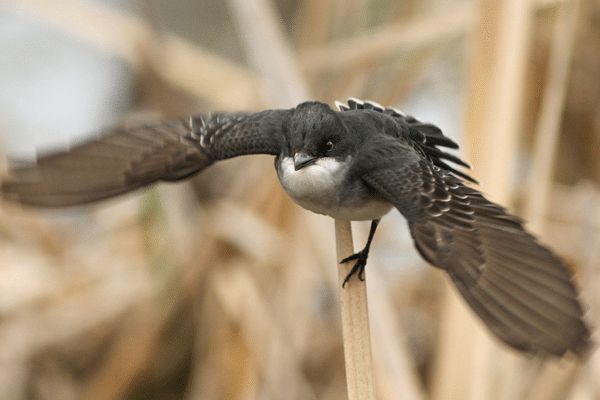
They are found in open habitats such as fields, meadows, and forest edges. In Yosemite National Park, you are likely to see them while hiking along trails in these habitats. If you are lucky, you may even see them hunting for insects in mid-air!
The American dipper
The American dipper is one of the most popular animals in Yosemite National Park. This small, wading bird can be seen almost anywhere in the park, from the shores of lakes and streams to the top of waterfalls.
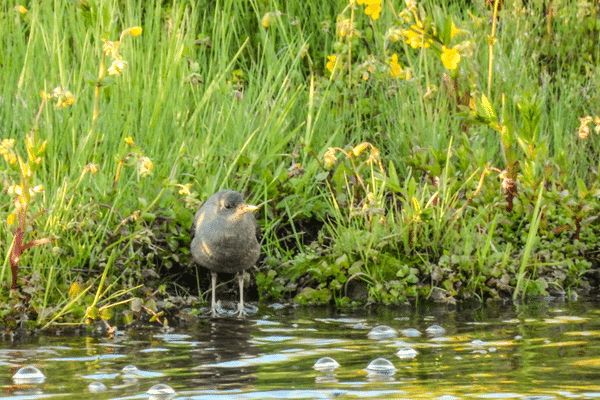
The American dipper is named for its habit of “dipping” its head underwater to feed on insects. These birds are also excellent swimmers and can even walk on the bottom of ponds and rivers. In winter, when many streams and lakes freeze over, the American dipper is one of the few animals that can still be seen actively feeding in these areas.
Hiking trails in Yosemite National Park
Welcome to an adventure in one of the most iconic national parks in the world! Yosemite National Park is a place where nature’s beauty knows no bounds. From towering granite cliffs and cascading waterfalls to serene alpine meadows, this park has it all.

If you’re looking for some breathtaking hiking trails that will take your breath away, then look no further! In this blog post, we’ll be exploring some of the best hiking trails in Yosemite National Park that are sure to leave you awestruck. So lace up your boots and get ready to hit the trail with us!
The best hiking trails in Yosemite National Park
Yosemite National Park is home to some of the best hiking trails in the United States. From easy, family-friendly hikes to strenuous multi-day backpacking trips, there is something for everyone in Yosemite.
Here are five of the best hiking trails in Yosemite National Park:
1. Mist Trail: One of the most popular trails in Yosemite, the Mist Trail takes hikers to the top of Vernal Falls. The trail is named for the mist created by the waterfall, which can make for a refreshing hike on a hot day. The trail is 3 miles (4.8 km) round trip and is considered moderate in difficulty.
2. John Muir Trail: A true backpacking adventure, the John Muir Trail runs 210 miles (338 km) from Mount Whitney to Yosemite Valley. Many thru-hikers choose to start at Whitney Portal and hike southbound, taking about three weeks to complete the entire trail.
3. Four Mile Trail: As its name suggests, the Four Mile Trail is 4 miles (6.4 km) long and climbs nearly 1,000 feet (300 m) from Yosemite Valley to Glacier Point. The trail provides stunning views of Half Dome, Yosemite Falls, and other iconic landmarks along the way. The trail is considered strenuous but can be completed as a day hike if you’re up for a challenge.
4. Panorama Trail: Another great option for those wanting breathtaking views, the Panorama Trail starts at Glacier Point and follows the south rim of Yosemite Valley, ending at Taft Point. The trail is 8.5 miles (13.7 km) long and moderately difficult.
5. Half Dome Trail: The Half Dome Trail takes hikers to the top of one of Yosemite’s most iconic landmarks, Half Dome. This trail is not for the faint of heart, as it involves a strenuous 8 mile (12.9 km) hike with a final ascent up a series of metal cables attached to the rock face. A permit is required to hike this trail, but the views from the top make it well worth the effort!
The hardest hiking trails in Yosemite National Park
Yosemite National Park is home to some of the most difficult hiking trails in the country. From the strenuous hike to Half Dome to the backpacking trip through Yosemite Valley, there are plenty of trails that will challenge even the most experienced hikers. Here are five of the hardest hiking trails in Yosemite National Park:
1. Half Dome: The hike to Half Dome is not for the faint of heart. With a round-trip distance of 14 miles and an elevation gain of over 4,000 feet, this trail will test your endurance. The final stretch to the summit requires climbers to use cables to pull themselves up the last 400 feet. This trail is only recommended for experienced hikers in good physical condition.
2. Yosemite Valley: A backpacking trip through Yosemite Valley is a challenging hike for anyone looking for an adventure. With a distance of over 20 miles and an elevation gain of more than 3,000 feet, this trail will take you through some of the most scenic parts of the park. Be prepared for some difficult sections, including a few miles of bushwhacking through thick vegetation.
3. Clouds Rest: The trail to Clouds Rest offers stunning views of Yosemite Valley, but it is not for the faint of heart. With a distance of 14 miles and an elevation gain of nearly 2,900 feet, this trail is considered one of the most difficult in the park. Be prepared for steep climbs and narrow ledges with breathtaking drop-offs.
4. Snow Creek Trail: The Snow Creek Trail is a strenuous hike with a round-trip distance of 14 miles and an elevation gain of more than 4,000 feet. This trail takes hikers through the rugged terrain of Yosemite Valley, including steep climbs and treacherous switchbacks.
5. Upper Yosemite Falls: The hike to Upper Yosemite Falls is considered one of the most challenging in the park. With a distance of 8 miles and an elevation gain of over 3,400 feet, this trail will take you through some of the most beautiful parts of the valley. Be prepared for loose footing and narrow ledges with breathtaking drop-offs.
Also Read: 10 Hiking Trails In Yosemite That Made Us Fall In Love With The Park
Tips for hiking in Yosemite National Park
If you’re planning a hike in Yosemite National Park, there are a few things you should keep in mind.
First, the park is huge and there are many different trails to choose from.
Second, the elevation can range from 4,000 to 14,000 feet, so be prepared for some altitude sickness if you’re not used to it.
Third, the weather can change quickly, so always be sure to check the forecast before you head out.
And finally, since Yosemite is such a popular destination, the trails can get crowded during peak times. So if you’re looking for a less crowded hike, try one of the less popular trails or go during an off-peak time.
Yosemite National Park is a premier destination for hikers looking to explore the great outdoors. With its many trails ranging from easy, family-friendly hikes to more challenging and adventurous treks, Yosemite has something for everyone.
Also Read: Yosemite National Park In The Fall: 9 Hikes We Will Be Going On!
Whether you’re looking for an isolated escape or a thrilling adventure, there’s no shortage of breathtaking sights and experiences in the park. So if you’re looking to take your next hiking trip up a notch, consider planning one in Yosemite National Park!
Guided Viator Tours: Our activity partner!
If you’re looking for a guided tour of Yosemite National Park, our partners Viator offer an extensive range of tours to choose from. Viator is a well-respected company that specializes in providing guided tours to some of the world’s most iconic destinations, including Yosemite National Park.
One of the benefits of booking a guided tour through Viator is the convenience and peace of mind that comes with having an experienced guide to lead the way. Whether you’re a first-time visitor to Yosemite or a seasoned traveler, a guided tour can help you make the most of your time in the park by showing you the most popular sights, providing insider tips, and sharing stories about the park’s history and ecology.
Viator offers a wide range of tours to suit different interests and schedules. For example, if you’re short on time, you might consider their “Yosemite Day Trip from San Francisco” tour, which takes you from the city to the park and back in a single day.
This tour includes stops at some of Yosemite’s most famous landmarks, such as Half Dome, Yosemite Falls, and El Capitan, and allows you to experience the park’s natural beauty without spending a lot of time on logistics.
For those who want to delve deeper into the park’s natural history, Viator offers several “Eco-Friendly Tours” that focus on conservation and education. These tours are led by expert naturalists and park rangers who can help you learn about the park’s flora and fauna, geology, and conservation efforts.
For example, their “Yosemite Valley Wildflower Walk” tour takes you on a leisurely stroll through the park’s meadows and forests to discover the vibrant wildflowers that bloom in the spring and summer months.
Guided tours by our partners Viator offer a great way to explore Yosemite National Park with the help of experienced and knowledgeable guides. With a wide range of tours to choose from, there’s something for everyone, whether you’re a first-time visitor or a seasoned traveler. So why not consider booking a guided tour through Viator on your next trip to Yosemite?
Use the search bar below to book your ideal stay on your Yosemite adventure!
Conclusion
Yosemite National Park is an amazing place to experience wildlife in its natural habitat. With over 1,200 species of animals, finding wildlife while hiking through the park can be a rewarding experience.
Also Read: Road Trip From Los Angeles To Yosemite (Routes, Pitstops, Things To Do)
Whether it’s a bear, an owl or a mule deer, there are plenty of interesting creatures to observe as you make your way around this majestic landscape. So, don’t forget your camera and don’t miss out on all the exciting experiences that Yosemite has to offer!


